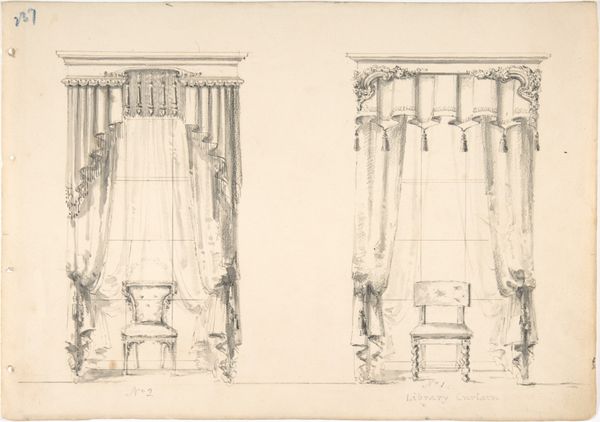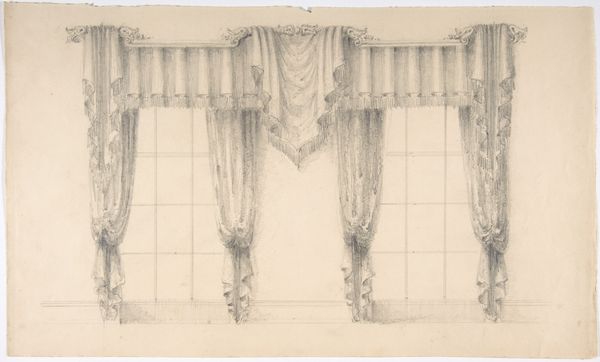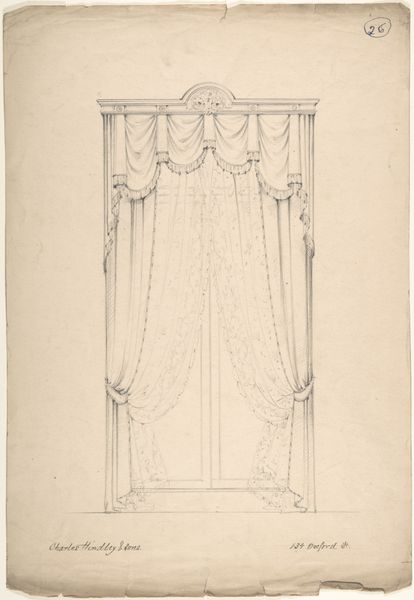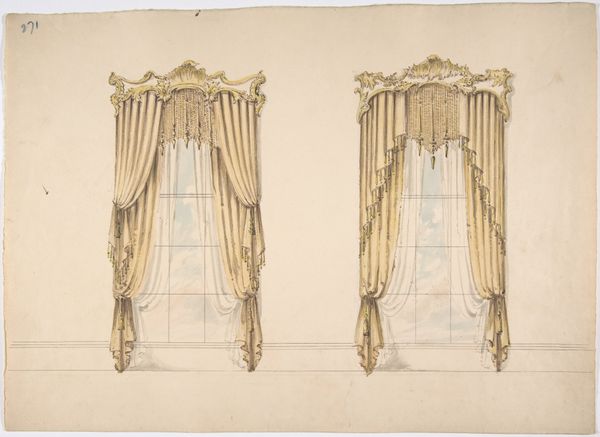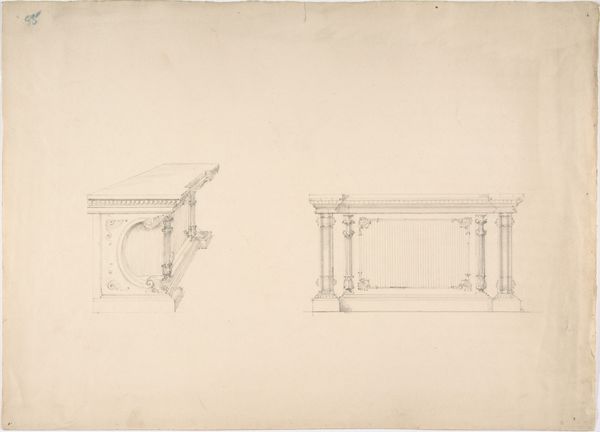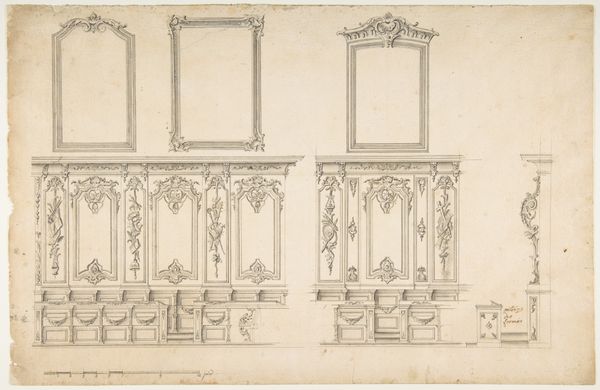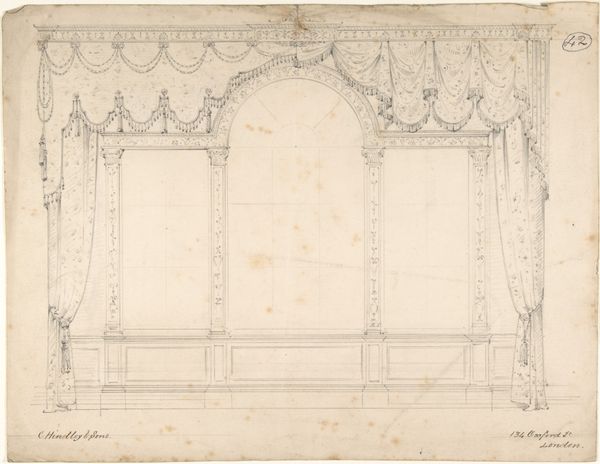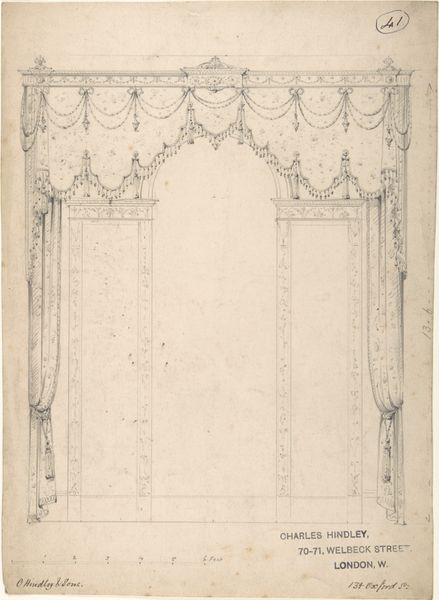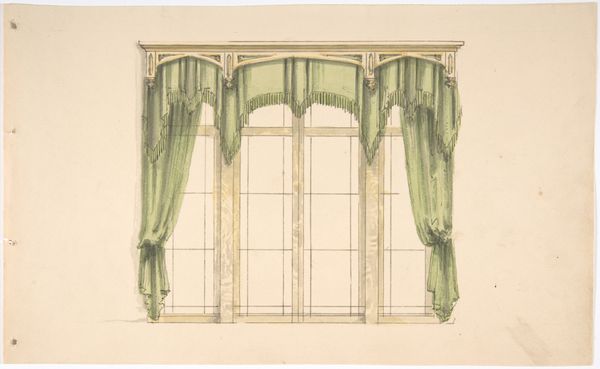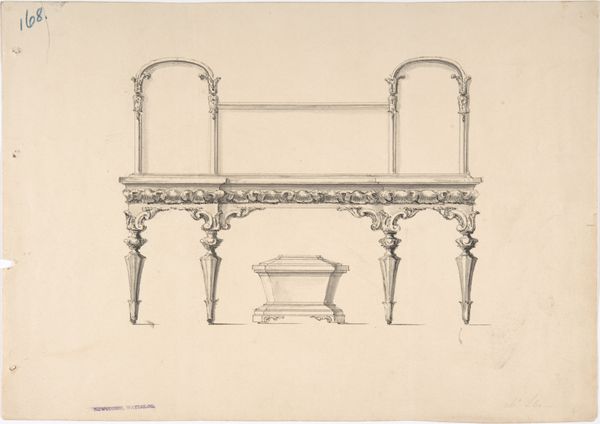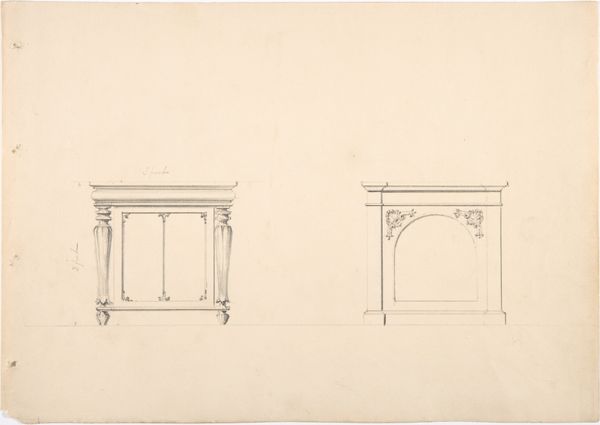
Design for Fringed Curtains Hanging at Two Windows 1800 - 1850
0:00
0:00
drawing, paper, pencil
#
drawing
#
neoclacissism
#
etching
#
paper
#
pencil
Dimensions: sheet: 8 9/16 x 12 3/16 in. (21.7 x 31 cm)
Copyright: Public Domain
Curator: Let’s discuss this drawing, “Design for Fringed Curtains Hanging at Two Windows.” It’s attributed to an anonymous artist and was likely made sometime between 1800 and 1850. The work is now housed at the Metropolitan Museum of Art. Editor: My immediate impression is of controlled opulence. The delicate pencil and paper medium contrasts with the implied weight and grandeur of the neoclassical style. It gives off an aura of restrained power. Curator: Precisely. These curtains weren’t just functional; they signaled status. During this era, textile choices spoke volumes about social class and economic power. The inclusion of neoclassical elements speaks to the aspirations of the commissioners. Editor: Note how the lines define volume, specifically through light and shadow, thereby creating the suggestion of luxurious folds and layers, even in a mere sketch. Observe the repetitive structure in the detailing of the valances; these forms adhere to a kind of structuralist framework of art. Curator: Definitely, the neoclassical design became synonymous with sophistication. Looking closely at these window treatments prompts questions about interior spaces and who occupied them. Where these designs actually used and, if so, in what contexts and for whom? Who was allowed to look out from these window frames and who was excluded? Editor: I agree, those lines provide clues as to a historical milieu. And while a full reconstruction might be elusive, the artist seems interested less in the specific room than the Platonic ideal of such window treatments. Curator: The piece invites contemplation about the relationships between interior design, societal values, and lived experiences, especially during periods of social change. It hints at an intersection of visual aesthetics and power structures, even in these simple design drawings. Editor: It highlights the structural aspects, revealing the ways these elements, when working together, signify power. It offers a concise way to examine the language of line, shadow, and form.
Comments
No comments
Be the first to comment and join the conversation on the ultimate creative platform.
